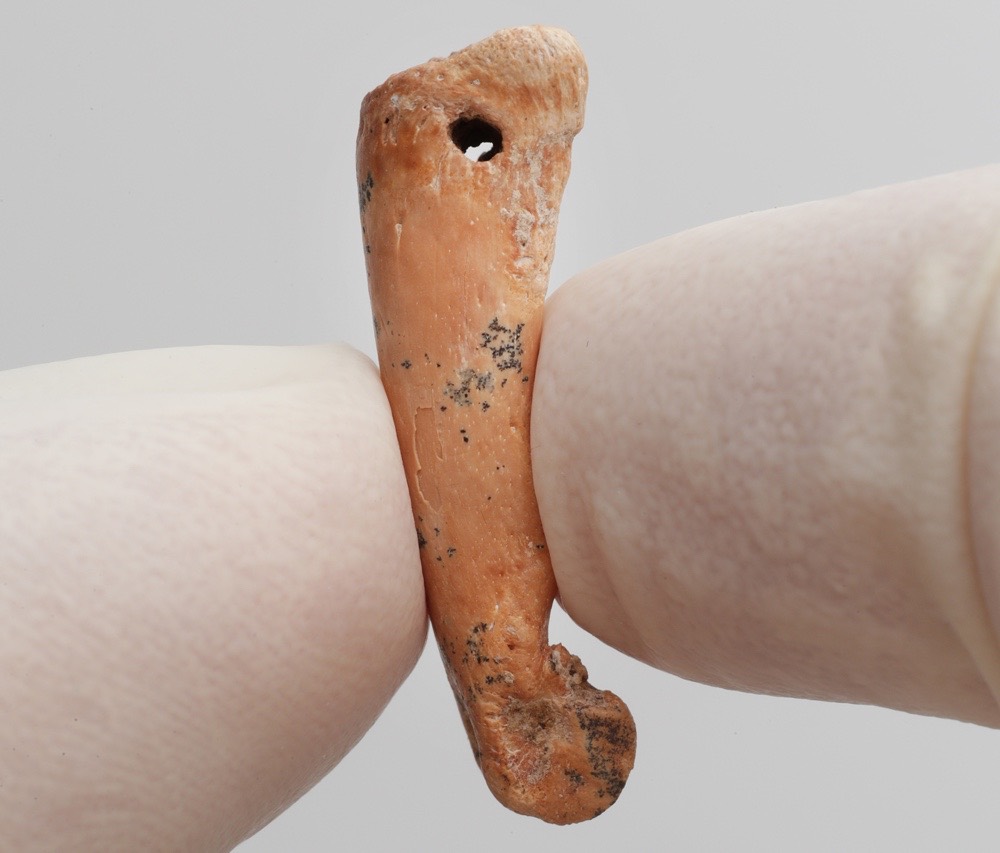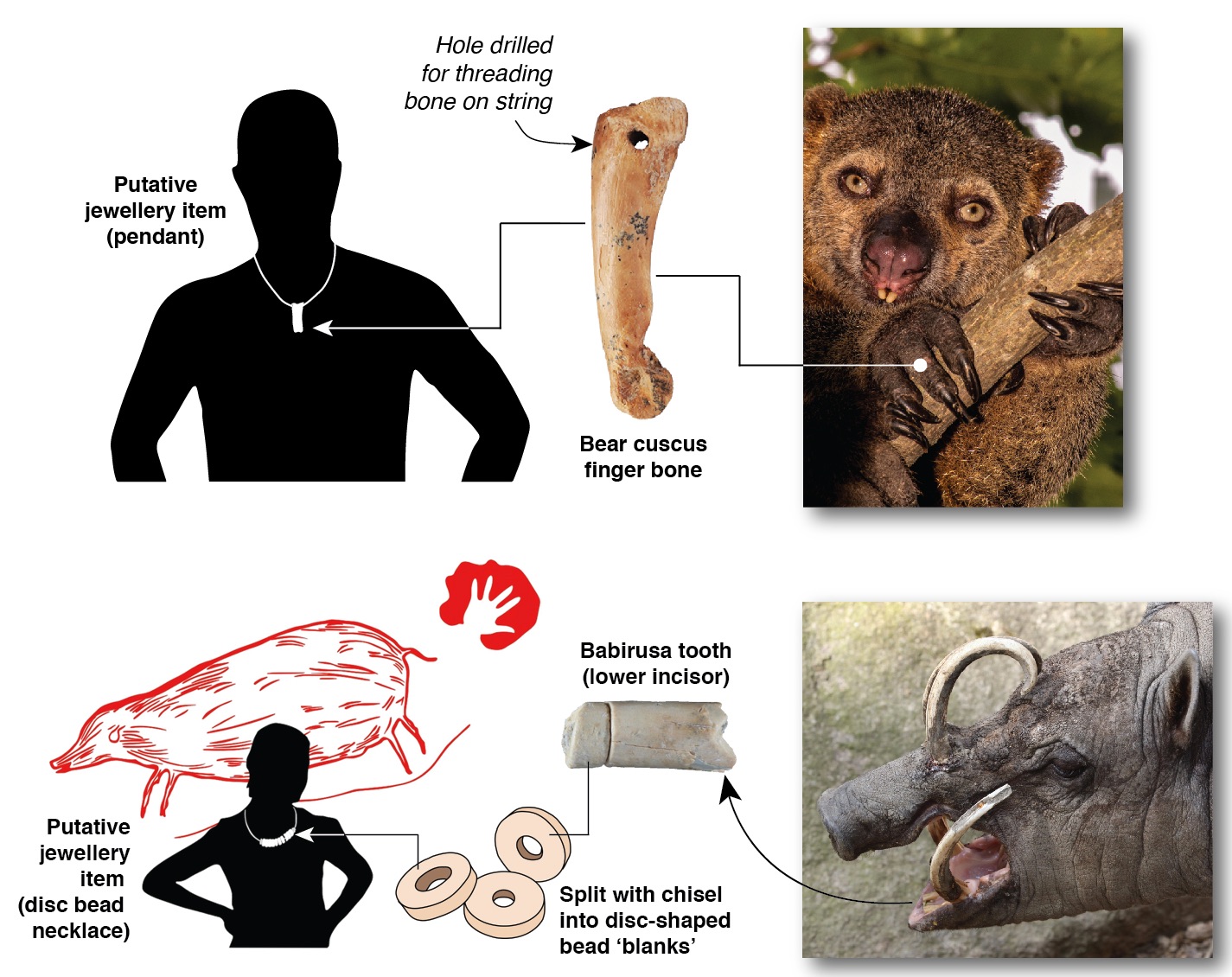In Ice Age Indonesia, People Were Making Jewelry and Art

Art and jewelry dating back to the last ice age have been unearthed in a cave in Indonesia —a discovery that suggests the people who lived there at that time were more culturally advanced than some experts previously thought.
The artifacts, which include pendants and beads made from the bones of "pig-deer" and monkey-like marsupials, date back at least 22,000 years, researchers report in a new study.
Archaeologists discovered the artifacts in Wallacea, a 1,000-mile-wide (1,600 kilometers) zone of mainly Indonesian islands separating Southeast Asia from Australia, and the items are now shedding light on the colonization of this area and nearby Australia. Previous research found that modern humans reached Wallacea by about 47,000 years ago.
Although many of the 2,000 or so islands that make up this archipelago were habitable during the Pleistocene epoch — often called the ice age— the current archaeological record for humans from this region during that time consists of just a handful of sites from only seven islands, said study lead author Adam Brumm, an archaeologist at Griffith University in Australia.
"Wallacea is the place that yielded the 'hobbit' fossils in 2003 and some of the world's oldest rock art in 2014," Brumm said."It is clearly of immense importance for our comprehension of human evolution, and the culture and experiences of the first people to inhabit Australia more than 50,000 years ago; yet from an archaeological perspective, we have only the most basic understanding." [Photos of the Hobbit, Homo Floresiensis]
Symbolic jewelry
The recently discovered trove of ice-age art described in the new study was unearthed at Leang Bulu Bettue, a cave and rock shelter on Sulawesi, the largest island in Wallacea.
"We uncovered abundant evidence for a variety of symbolic behavior, suggesting a flourishing artistic culture existed on Sulawesi during the tail end of the last ice age," Brumm told Live Science.
Get the world’s most fascinating discoveries delivered straight to your inbox.
The items, unearthed during archaeological excavations between 2013 and 2015, range from 22,000 to 30,000 years old. They include disc-shaped beads made from the teeth of tusked boar-like animals known as babirusas, also known as "pig-deer," and a pendant made from a finger bone of a monkey-like, tree-dwelling marsupial known as a bear cuscus. These creatures are "exotic animals found only on this island," Brumm said. [In Photos: The World's Oldest Cave Art Found in Indonesia]
Other artifacts included stone flakes incised with geometric patterns; fragments of mineral pigments such as red- and mulberry-colored ochre; and a long, hollow bear-cuscus bone with traces of red and black pigment that might have been used as a kind of airbrush for creating rock art, the researchers said.
The researchers noted that until now, no collections of diverse ice-age artifacts from Wallacea had been found. "The discovery is important because it challenges the long-standing view that hunter-gatherer communities in the Pleistocene tropics of Southeast Asia were less advanced than their counterparts in Upper Paleolithic Europe, long seen as the birthplace of modern human culture," Brumm said.
Creative people
Prior work in Wallacea had unearthed only sparse evidence of Pleistocene-era art, jewelry and other examples of cultural complexity from Wallacea and nearby Southeast Asia and Sahul. This led some researchers to suggest that the peoples of these areas were less advanced than others elsewhere across the globe during the Pleistocene. Others argued that this area had been explored much less than sites elsewhere in the Old World, and that artifacts that may reflect cultural complexity in Wallacea might not have preserved well.
These new findings suggest that ancient humans in Wallacea "were creative and artistic people whose symbolic culture adapted readily to the marsupials and other novel forms of animal life encountered in this region," Brumm said.
These cultural adaptations might have been crucial to the colonization of the ancient continent of Sahul — what is now Australia, New Guinea and Tasmania — given the rich, diverse, unique and unfamiliar animal and plant species there, Brumm said. All in all, the intricate symbolic relationships seen between humans and animals "that characterize Aboriginal cultures of Australia may have their roots in the human journey through Wallacea prior to the settlement of Sahul," Brumm said.
Although remains of the extinct human lineage nicknamed the "hobbits" were found on the Indonesian island of Flores, south of Sulawesi, Brumm stressed that "there is no obvious connection between this discovery and the 'hobbit' lineage."
Future research will continue excavations at this site, "with the aim of searching for more evidence for the artistic culture and symbolic lives of some of the world's earliest known cave artists, and to try to determine when modern humans first colonized Sulawesi," Brumm said.
The scientists detailed their findings online today (April 3) in the journal Proceedings of the National Academy of Sciences.
Original article on Live Science.




